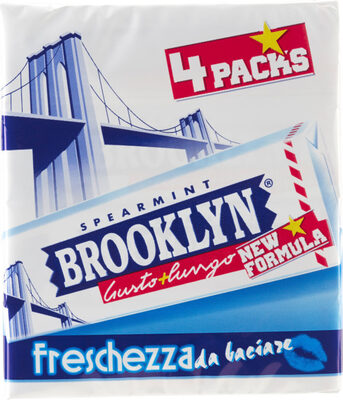Chewing gum spearmint - Brooklyn - 100 g
This product page is not complete. You can help to complete it by editing it and adding more data from the photos we have, or by taking more photos using the app for Android or iPhone/iPad. Thank you!
×
Barcode: 8003440100066 (EAN / EAN-13)
Quantity: 100 g
Packaging: it:Bustina
Brands: Brooklyn, Perfetti Van Melle
Categories: it:Gomma da masticare
Labels, certifications, awards: No gluten
Origin of ingredients: Italy
Manufacturing or processing places: Italia
Stores: Panorama
Countries where sold: Italy
Matching with your preferences
Environment
Packaging
Transportation
Report a problem
Data sources
Product added on by openfoodfacts-contributors
Last edit of product page on by telperion87.
Product page also edited by kiliweb, roboto-app, yuka.sY2b0xO6T85zoF3NwEKvlnBhSMvArQnVN0fQmkmJz_Sjf5PQRP5Pz63UHKo.
If the data is incomplete or incorrect, you can complete or correct it by editing this page.






